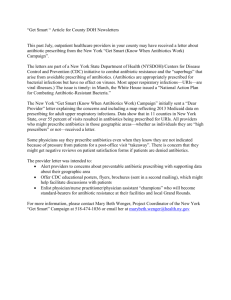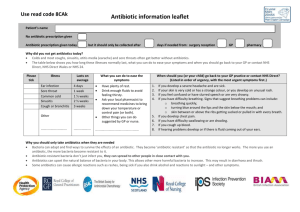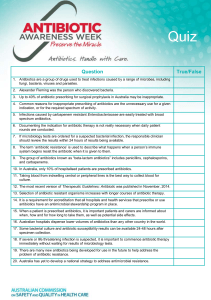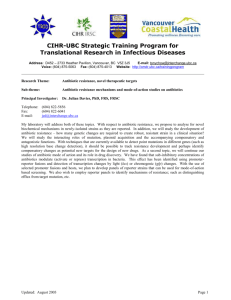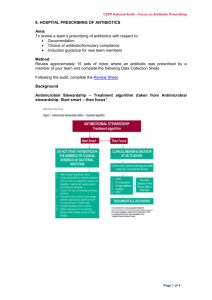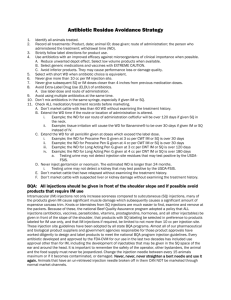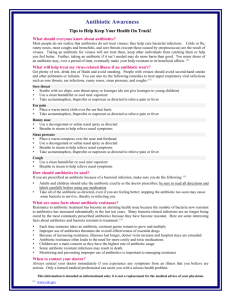Antibiotic use during a Clostridium difficile “period of increased
advertisement
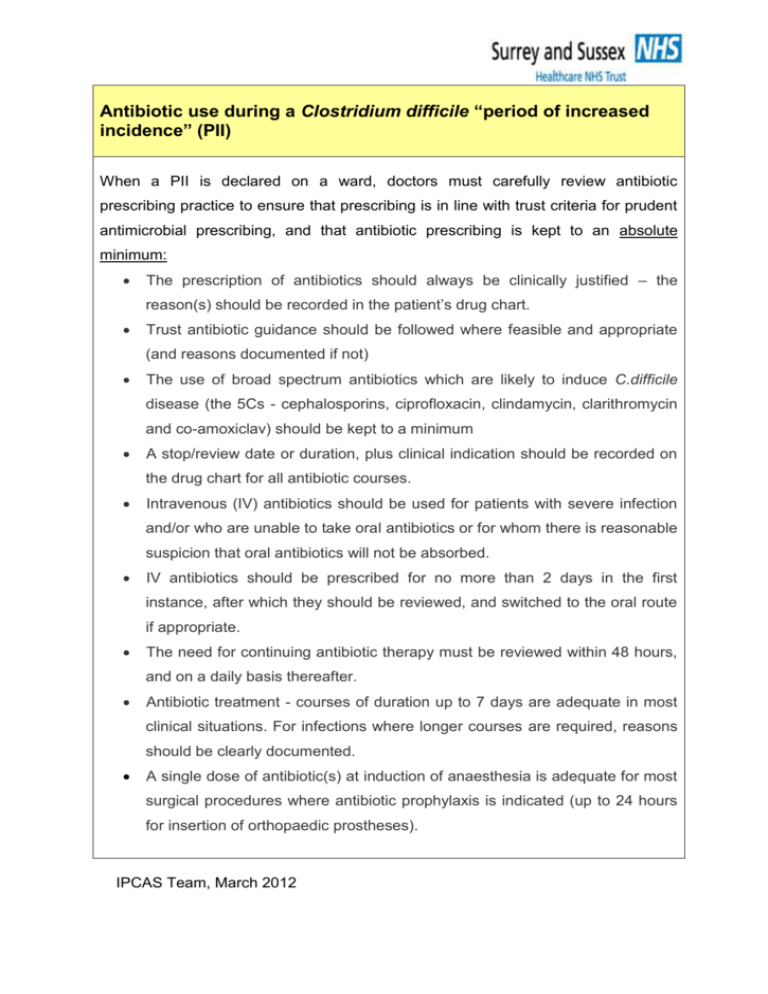
Antibiotic use during a Clostridium difficile “period of increased incidence” (PII) When a PII is declared on a ward, doctors must carefully review antibiotic prescribing practice to ensure that prescribing is in line with trust criteria for prudent antimicrobial prescribing, and that antibiotic prescribing is kept to an absolute minimum: The prescription of antibiotics should always be clinically justified – the reason(s) should be recorded in the patient’s drug chart. Trust antibiotic guidance should be followed where feasible and appropriate (and reasons documented if not) The use of broad spectrum antibiotics which are likely to induce C.difficile disease (the 5Cs - cephalosporins, ciprofloxacin, clindamycin, clarithromycin and co-amoxiclav) should be kept to a minimum A stop/review date or duration, plus clinical indication should be recorded on the drug chart for all antibiotic courses. Intravenous (IV) antibiotics should be used for patients with severe infection and/or who are unable to take oral antibiotics or for whom there is reasonable suspicion that oral antibiotics will not be absorbed. IV antibiotics should be prescribed for no more than 2 days in the first instance, after which they should be reviewed, and switched to the oral route if appropriate. The need for continuing antibiotic therapy must be reviewed within 48 hours, and on a daily basis thereafter. Antibiotic treatment - courses of duration up to 7 days are adequate in most clinical situations. For infections where longer courses are required, reasons should be clearly documented. A single dose of antibiotic(s) at induction of anaesthesia is adequate for most surgical procedures where antibiotic prophylaxis is indicated (up to 24 hours for insertion of orthopaedic prostheses). IPCAS Team, March 2012



